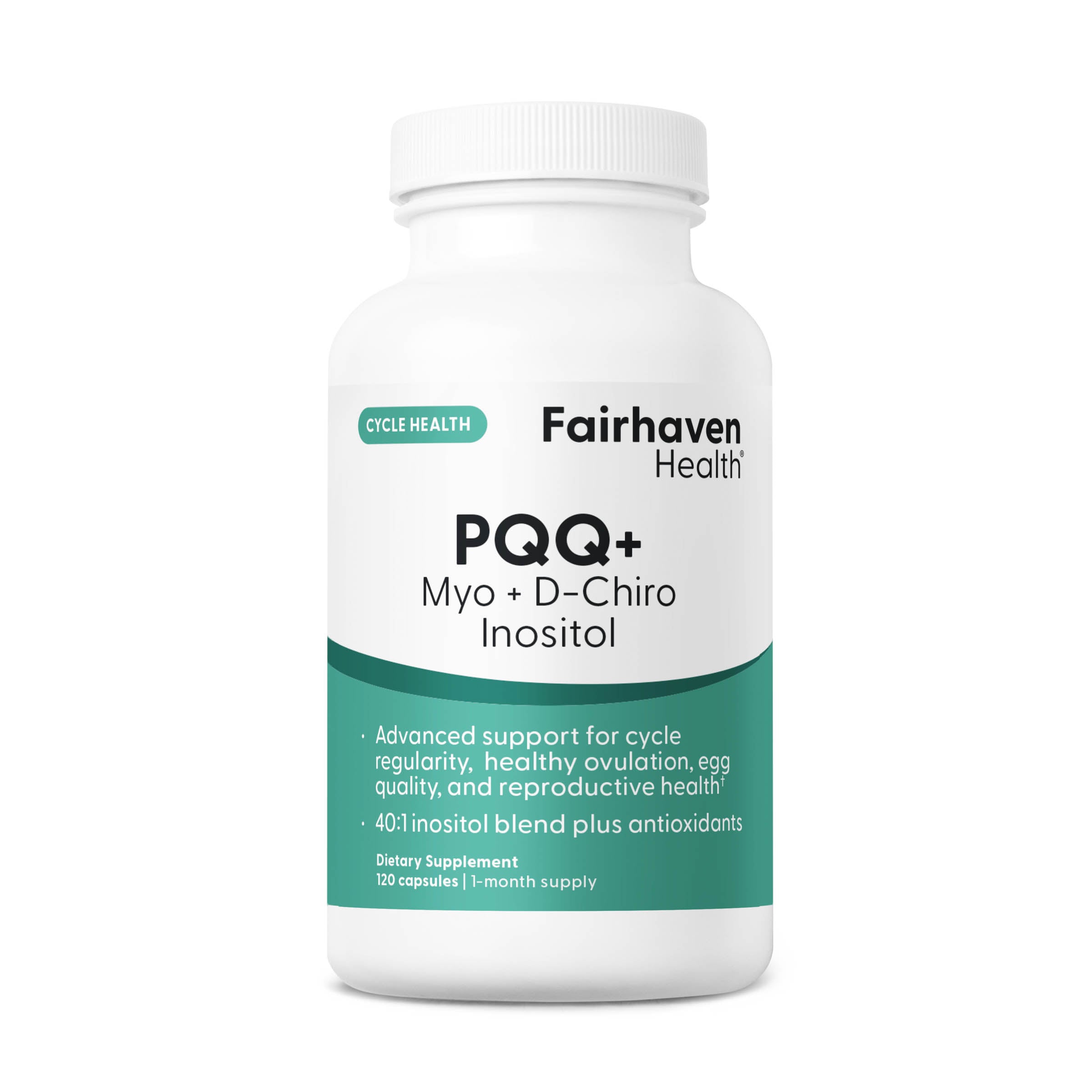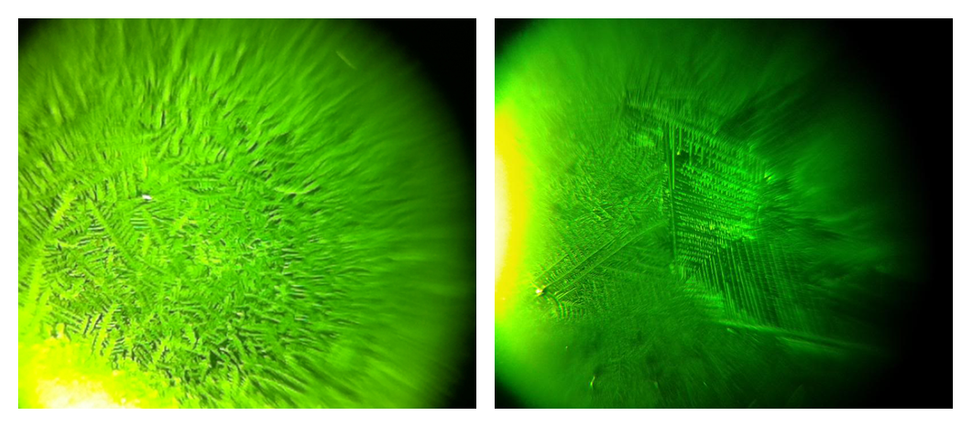Ovulation Microscope Questions and Answers
Using Your Saliva Ovulation Test
Recently buy an ovulation microscope? For best results, read our FAQ and instructional guide below...
Using your ovulation microscope is easy - though you should pay close attention to detail and observe all instructional guidance provided by the manufacturer.
For best results, test on a daily basis, preferably first thing in the morning before eating, drinking or brushing your teeth. Track each day's results on a calendar or fertility chart. When you begin to see a ferning pattern, the onset of ovulation is approaching. This is the beginning of your most fertile time to conceive.
Interpreting Results
Not Fertile: Simple dot patterns and lines indicate no ovulation. You are not fertile at this time.
Transitional: Small ferning patterns – or crystal forms - appear among the spots and lines. Ovulation may occur in 3-4 days. At this time, conception is possible, though not yet likely.
Fertile: Strong ferning – or crystal – patterns dominate the sample. Ovulation is about to occur or already occurring. At this time, conception is likely. This is your most fertile time of the month. Conception is possible from between 5 days before to 24 hours after ovulation
 Fertile: A positive (ferning) test result.
Fertile: A positive (ferning) test result.
Questions and Answers about Ovulation Microscopes: FAQ
Tip #1: When applying a saliva sample, remember to PULL the lens from the microscope - do not unscrew.
Q: How does the ovulation microscope work?
The ovulation microscope detects hormone changes that occur prior to and during ovulation. As estrogen increases, "ferning" or crystal patterns can be viewed in dried samples of saliva. These patterns indicate that ovulation is about to take place. The duration of your most fertile time lasts from several days before ovulation to 24 or so hours after ovulation. The duration of a woman's fertile period is typically around six days, ending 24 hours following ovulation. Unlike urine LH tests, your ovulation microscope allows you to track fertility and your cycle changes. When you observe a positive result (crystal/ferning patterns), ovulation is likely to occur within 24 to 72 hours.
Q: When do I test with my ovulation microscope?
Test on a daily basis and record results on a fertility chart or calendar. Test first thing in the morning - but never after eating, drinking, or brushing your teeth. These activities may interfere with results. If you test later in the day, try to wait at least two to three hours after eating or drinking.
Q: Is Fertile-Focus accurate?
When instructions are followed, determining fertility through ovulation microscopy has been shown to be 98% accurate.
Tip #2: Avoid brushing teeth, eating, or drinking for several hours before collecting a sample. A sublingual saliva sample, collected from below the tongue will provide the best results!
Q: What is an "estrogen surge" or "estrogen spike"?
While estrogen is present in your body throughout your cycle, just prior to ovulation you may have an “estrogen surge” - a marked increase in the presence of estrogen. The increase of estrogen facilitates the ferning patterns in your saliva. An estrogen surge or ovulation may not occur in all cycles for all women.
Q: Are ferning patterns observable at other times in my cycle?
A second second estrogen surge may occur right at the end of your cycle. By monitoring cycle length, and keeping daily results, the second surge should not be confounded with the estrogen surge preceding ovulation. Also, as different women produce differing levels of estrogen, ferning patterns may vary a bit in appearance and duration.
Q: Can Ovulation Microscopes be used as a contraceptive device?
Ovulation microscopes should not be used as a contraceptive device.
Q: How do I apply a saliva sample?
For best results, collect a sublingual saliva sample as saliva glands are located below the tongue. Pull (do not unscrew) the lens from the housing. Collect a dab of saliva and place it on the surface of the lens. Try to avoid making bubbles and allow the sample to dry for at least five minutes before attempting to read results.
Q: Will Clomid interfere with test results?
Clomid will not interfere with ovulation microscope results, though it may intensify the appearance and duration of ferning. If you are taking Clomid, consult your physician for details.
Q: Can I use my ovulation microscope if my cycle is irregular?
Yes, Fertile-Focus can be used by women with both regular and irregular cycles.
Q: What are some tips for optimizing results?
Do not eat, drink beverages (besides water), or brush teeth for at least 2-3 hours before taking the test. Apply sublingual saliva sample to the exterior lens (in the case of Fertile Focus, pull the lens from the housing/do not unscrew lens). Always allow the saliva sample to dry, avoid air bubbles in the sample and Focus by turning the focalizable lens (remove eye-glasses).
Q: What can interfere with results?
Pregnancy, menopause, or hormonal imbalance, supplemental estrogen, and recent discontinuation of birth control medication may interfere with results. In continued absence of any ferning, your body may not be producing sufficient estrogen. Consult your physician.
Q: I am trying to get pregnant. When is the best time for intercourse?
To increase your chances of getting pregnant, it is recommended that you have intercourse as soon as you start to see the ferning pattern begin.
Q: Will all women’s ferns look the same?
No, because different women produce estrogen in different amounts, each woman will have her own unique ferning pattern.
Q: Will I see ferns at other times of the month other than around the time of ovulation?
Some women will, on occasion, see ferns at other times of the month. This is primarily due to a second estrogen surge near the end of your cycle. This is also why you calculate the expected time of ovulation, and look for the ferning patterns then.
Q: Why would it be that I am not seeing any ferns?
There could be several reasons: First, make sure that you have not eaten or drank anything other than water for two hours prior to testing. Second, be sure to swish saliva around in your mouth and gather fresh saliva from the saliva glands under your tongue. Third, your body may not be producing enough estrogen. If you think this is the case, please consult your physician.
Q: I am seeing ferns all the time. Why is that?
A small percentage of women produce a high amount of estrogen all month long. One reason this could be is because these women are not producing enough progesterone. If you think this is true in your case, please consult your doctor or health care provider.
Q: What else could interfere with my test results?
If you become pregnant, or have recently been pregnant, or have reached menopause, or have just stopping taking birth control pills, or taking injections for birth control. This would also be true if you are taking hormone replacement therapy, such as supplemental estrogen.







